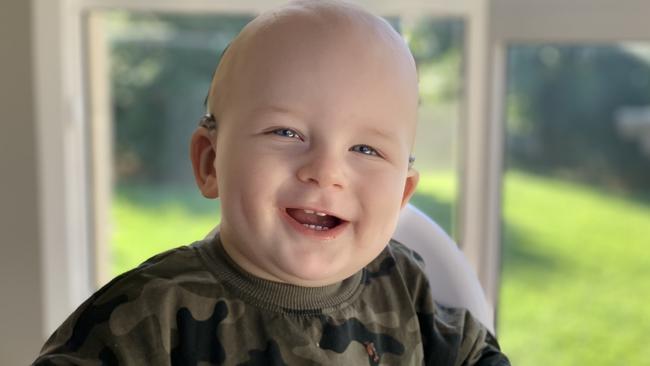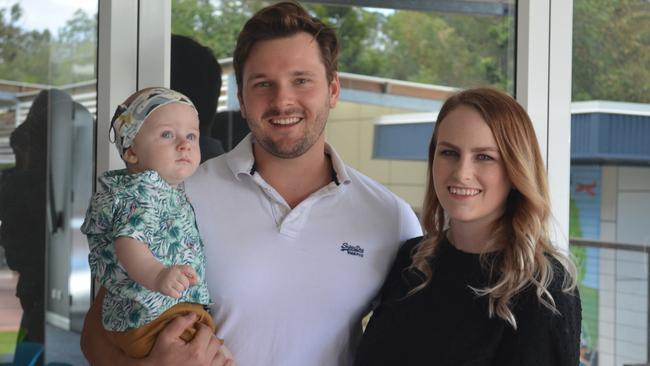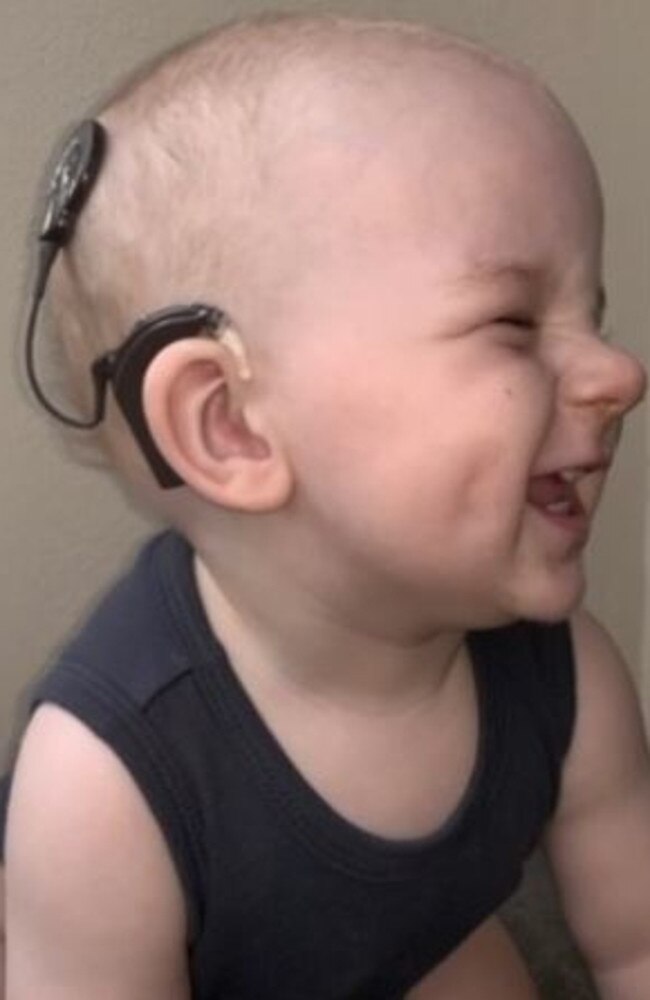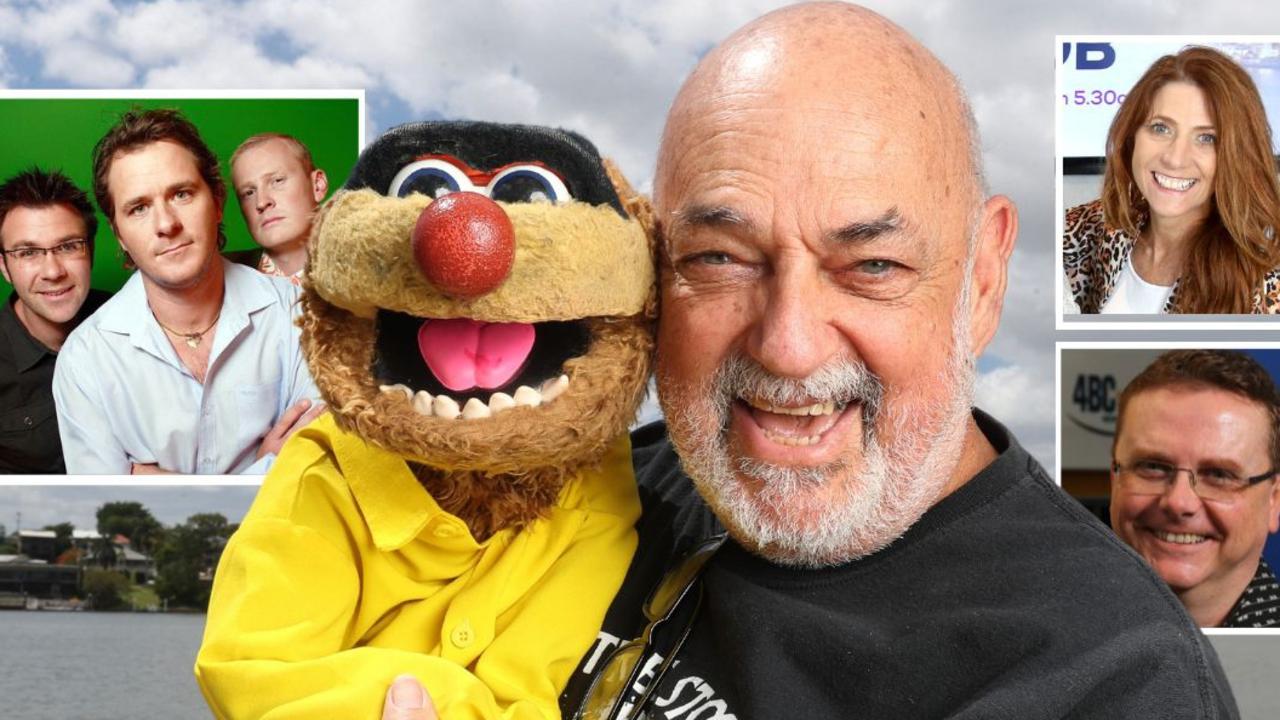Family feels lucky after technology helps their son to hear
Wylder Lehfeldt was identified as being profoundly deaf soon after he was born, and had bilateral cochlear implant surgery at nine months. His mother Telarni Wilson shares their journey.

North
Don't miss out on the headlines from North. Followed categories will be added to My News.
WYLDER Lehfeldt was identified as being profoundly deaf soon after he was born, and had bilateral cochlear implant surgery at nine months.
Four months later his mother TELARNI WILSON, of Chermside, shares their journey, from shock and confusion at his diagnosis to joy when Wylder heard their voices for the first time.
Q: When did you find out Wylder was profoundly deaf?
TELARNI: Wylder was identified as profoundly deaf through his newborn hearing screening.

Q: How did you feel?
TELARNI: It was confusing for both Dave (Lehfeldt) and I when we found out as neither of us knew anyone who was deaf, let alone profoundly deaf. We both kept very calm though and there was so much information to take in that we really didn’t have much time to react. The audiologist who did our testing at Queensland Children’s Hospital (then Lady Cilento Children’s Hospital) was quite surprised how accepting we were of it, and even said to us that we were taking it very well. I don’t know if it was shock or just both of us trying to process what was being said. Once we left the appointment we were both silent driving in the car. I started crying. I didn’t really understand or ever think this was a possibility. We went to lunch and Dave called his dad to tell him what was going on. He walked away from the table and I just saw him crying on the phone. It just suddenly hit us both.
Q: What did you do?
TELARNI: Luckily for us, the system that is in place here in Queensland is one that is heavily geared towards getting children with hearing loss the best access to communication as quickly as possible. We were told of a place called Hear and Say, which is a not-for-profit that focuses on developing speech and listening skills for children with hearing loss. This is about the same time we heard the words ‘cochlear implant’ for the first time and were told of its potential for giving Wylder access to sound (pending months of testing of course).
MORE NORTH BRISBANE NEWS:
Speed limit to drop on road along Sandgate waterfront
Pin-up gals rock vintage look at annual GreazeFest bash
Broken chair returned with cheeky note during kerbside collection
Q: What options were you given?
TELARNI: From the time of Wylder’s diagnosis, we were given so much information regarding hearing aids and cochlear implants, and spoke briefly about sign language. Dave and I knew we wanted Wylder to go down the cochlear implant/hearing technology route, so we didn’t consider sign language as his main form of communication. We were told about an early education centre in Taigum which offers sign language aspects as well as Hear and Say, which is where we decided to go.
Q: What did you decide to do?
TELARNI: We decided to go down the listening and spoken language route, first starting with hearing aids, working towards cochlear implants. It’s a pretty lengthy process and there’s a lot of tests and waiting. His initial diagnosis testing took about 10 hours (split into two sessions). Then he was fitted with hearing aids which he received in late June 2018. We then went through aided testing (to see if he was picking up any sounds with the aids), an MRI, CT scan, genetic testing and a lot more audiology testing to confirm his hearing level was stable (not getting better or worse over time).

Q: When did he get the implant?
TELARNI: Wylder was nine months old at the time of his bilateral cochlear implants surgery. We were very lucky to have such a great surgeon in the CI field (Dr Tony Parker) complete Wylder’s surgery. Ten days after surgery he heard for the first time once his cochlear was switched on at Hear and Say.
Q: What happened when it was turned on?
TELARNI: He was so chill. You watch the YouTube videos of children hearing for the first time and you see this textbook reaction of amazement. Wylder wasn’t like that. He turned and grabbed his head like ‘what was that?’ Then went straight back to playing with the toys. There were moments when he was frightened by the sounds, but that faded quickly and he was just, again, so chill.
SUBSCRIPTION DEAL: $1 A DAY FOR THE FIRST 12 WEEKS. MIN COST $28
Q: What difference has the cochlear implant and Hear and Say made to your family?
TELARNI: Amazing. That’s the only word we have for it. Having your profoundly deaf child responding, listening, learning and talking is amazing. Every day we think about how lucky we are to have access to the cochlear implant technology and to a centre like Hear and Say. Hear and Say enable Wylder to use his cochlear effectively, it is the perfect match of the technology. Without Hear and Say he wouldn’t understand the sounds he was hearing and be able to talk like any other kid his age. The last eight months of attending Hear and Say has done wonders to calm the mind and set our expectations for Wylder’s immediate future. The worry of him not being able to hear is long gone as he can now hear us and understand what we are saying. As we move through time, our worries are now those of a normal parent — ‘is that a rock in his mouth?
Q: Is it something that will need to be constantly updated/changed?
TELARNI: Currently, Wylder attends mapping at Hear and Say monthly to make sure the program that his hearing relies on is finetuned and working as best as it can. As he gets older the frequency at which the map is tuned will change on a biannual basis. Eventually his implants may need to be replaced but from what we know, nobody has had to replace one yet (unless they’ve been injured or had another operation). The great thing about the hardware is each new processor is backwards compatible with the previous generation implant. Wylder currently has the latest Cochlear N7.


